U.K. clothing brand Vollebak is thinking big about keeping its footprint small. With its use of prehistoric mineral dyes to its recent collaboration with the Bjarke Ingels Group on an off-grid sustainable island, the label is out to prove nature has all the answers to our problems.
Marking an historic debut at Sotheby’s this week, Vollebak Island will go up for auction on June 14. The island, located off the coast of Nova Scotia in Canada, is expected to sell for an estimated $5,000,000 to $10,000,000 USD and set a new precedent in sustainable luxury.
Conceived by globally renowned architecture firm Bjarke Ingels Group (BIG), the self-sufficient island, named ‘Home of Adventure’, boasts a diverse ecosystem of forests and landscapes spanning across more than 11 acres. The winning bidder also receives the rights to the Ingels design with planning rights.
BIG partnered with the U.K.’s avant-garde clothing brand, Vollebak, to bring the ambitious eco project to life. Vollebak is the brainchild of British designers and twin brothers Nick and Steve Tidball. The label uses advanced material technology to tackle the fundamental challenges of the next century including space, climate change, human health, and sustainability. The Tidballs have twice been named winners of Time Magazine’s Best Inventions with designs including the world’s first solar-charged jacket, the first jacket made from graphene, and the first computer-programmable clothing.
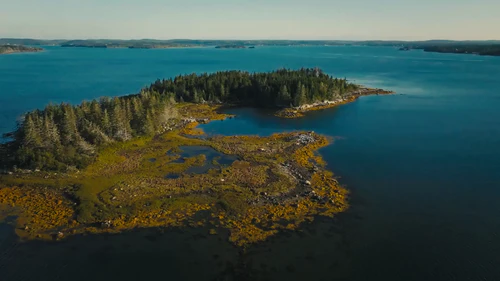
“Vollebak is using technology and material innovation to create clothes that are as sustainable and resilient as they are beautiful. In other words, the fashion equivalent of BIG’s architectural philosophy of Hedonistic Sustainability,” Bjarke Ingels, founder of BIG, said in a statement. “For Vollebak Island, we have imagined the rooms as a manmade mount of individual volumes rising out of the ground and a separate outpost at the edge of the breaking waves.”
The island’s architectural jewel is the sprawling 597 square meter ‘Earth House’ made up of nine interconnected structures, supplemented by the secluded 88 square-meter ‘Wood House’, a stand-alone garden suite nestled on the island’s eastern shoreline. Harnessing the power of offshore wind, geothermal energy, and solar power, and storing it in state-of-the-art Tesla power walls, this architectural wonder is a mere fifty-minute drive from Halifax.
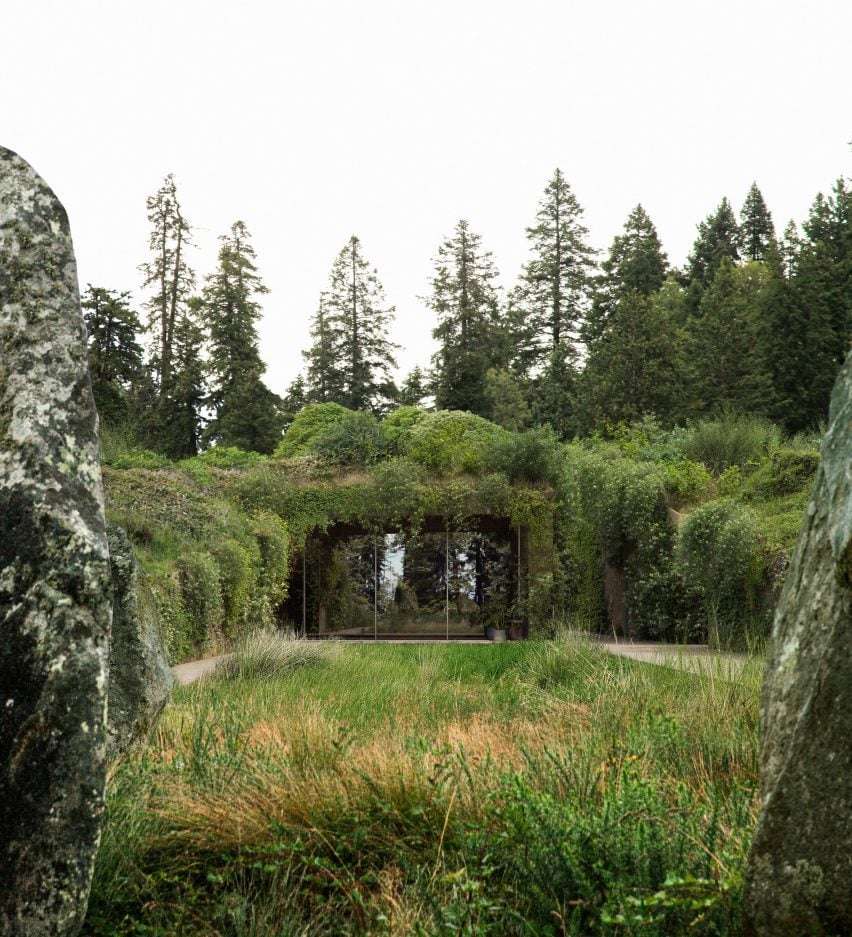
“For Vollebak Island, we incorporate local tradition elevated by global innovation in a self-sustained manmade ecosystem off the coast of Canada,” Ingels said.
Acting as the island’s hub, the Earthship style ‘Earth House’ is an artistic amalgamation of bespoke structures, integrated into the island’s natural topography. It embodies the idea of architecture as land art, and its open layout invites nature to seep into the living spaces.
It comprises a living and dining area constructed entirely from weather-resistant and naturally insulating thatch, centering around a colossal six-meter Viking fire pit. Accommodation includes four unique bedrooms, crafted from fire-retardant hempcrete, 3D-printed concrete, or naturally occurring boulder. Guests can unwind in a Japanese-style bathhouse featuring soaking tubs carved from bedrock, or immerse in the celestial grandeur in the sunken hempcrete stargazing room and meditation space.
Further enhancing the sustainable aspect of the project is a glass-brick greenhouse for local food production, an energy storage building with a solar roof and submarine door, and a boathouse with regenerative seaweed insulation. The buildings’ roofs incorporate local shrubbery and flora to minimize storm-water runoff and lessen the strain on water treatment systems.
The ‘Wood House’ is a standalone two-bedroom suite with a robust wooden exterior designed to withstand extreme weather conditions. Its monolithic facade can be opened or closed towards the sea, offering panoramic views of the ocean.
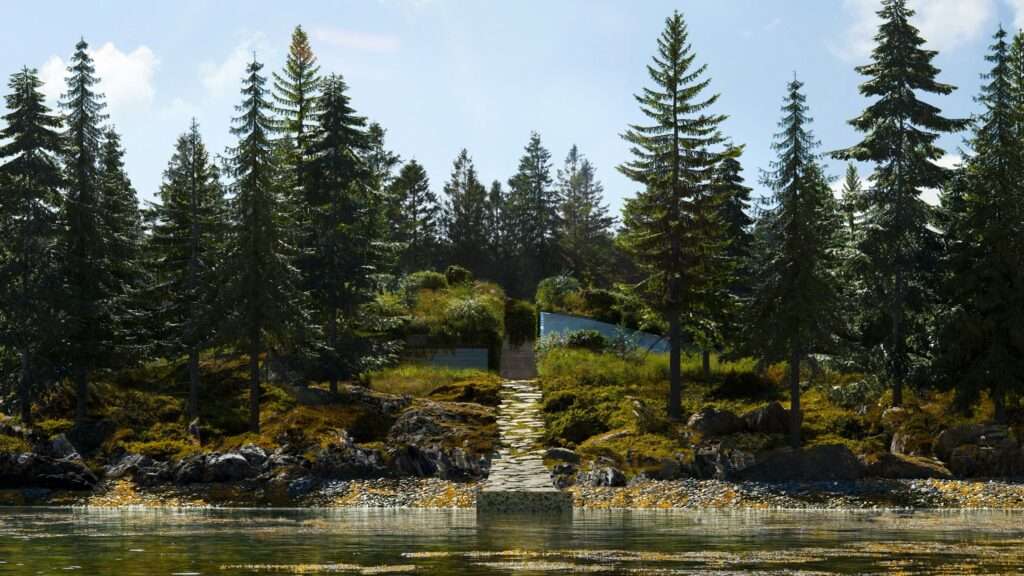
Home of Adventure follows another milestone for Vollebak. Last month, it unveiled its Mineral collection, drawing on a prehistoric color palette with hues coming from four naturally occurring minerals: Celadonite, Hematite, Ochre, and Volcanic Soil. The range spans nine pieces including sweatshirts, sweatpants, and T-shirts, made from a fabric blend of hemp and organic cotton, each echoing the deep connection between fashion and Mother Earth.
Every item in the collection is bathed in a grand mineral dye, a process that boasts a minimal waste footprint, producing only sediment and water as by-products, both of which can be easily reintegrated into nature.
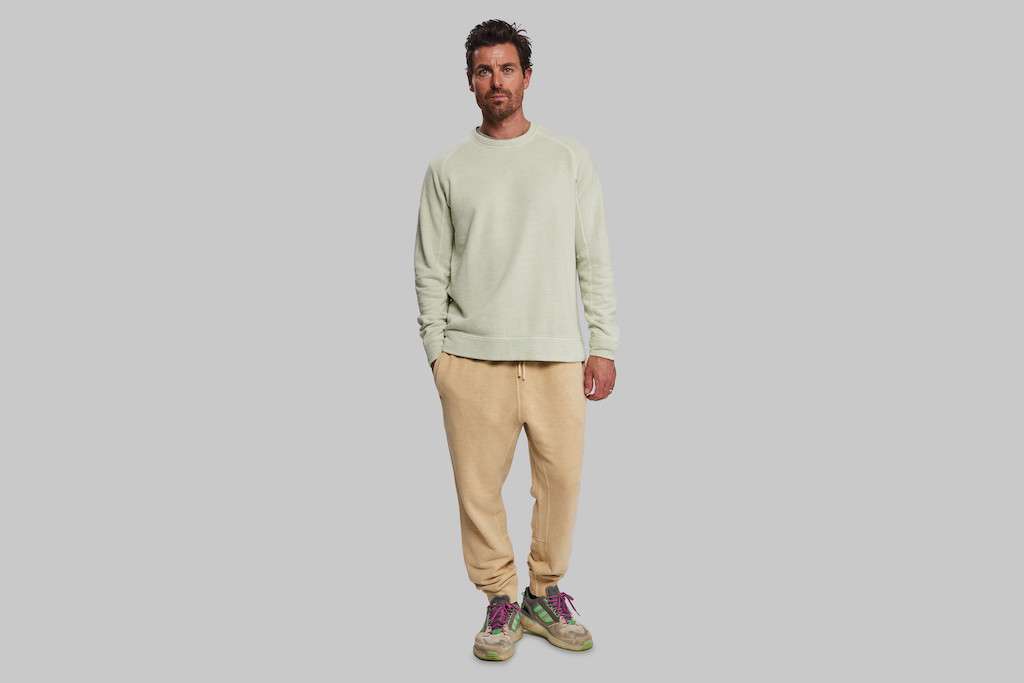
The inspiration behind each piece stems from the history and composition of the four minerals. Celadonite forms at the meeting point of lava and seawater; Hematite, the ‘blood stone’, is the primary source of earthly iron; Ochre holds the title of the world’s oldest pigment; and Volcanic Soil, which came into existence 3.8 billion years ago.
The Earth’s transformation into its current form around 4.5 billion years ago saw the birth of a mineral-rich upper crust, the result of numerous galactic collisions and the fusion of geological and biological life. Early man harnessed these minerals not only for survival but also for artistic expression, using them as pigments to paint cave walls. Today, Vollebak employs these ancient minerals not for art on rock faces, but for color on clothing.
“Vollebak continues to explore new, low-impact ways to dye clothing. For the Mineral range, we’ve drawn from the coloring tools of early man – minerals, rocks, and soils,” Steve Tidball, CEO and Co-founder of Vollebak, said in a statement.
Celadonite, a blue-green mineral, comes in a range of shades from sea green to apple green and consists of a combination of hydrated iron, magnesium, potassium, and other trace elements that form in deep marine environments where seawater meets lava.
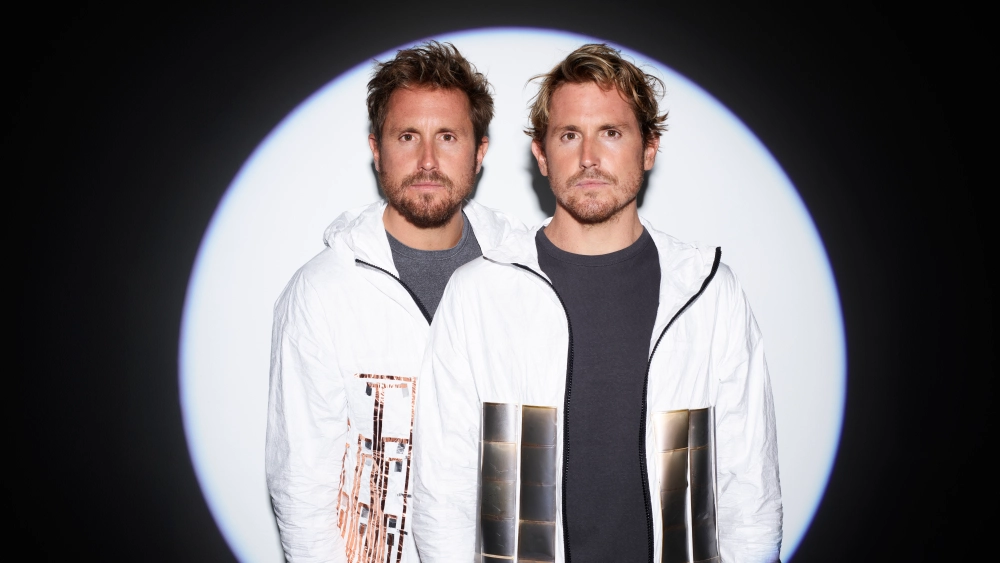
Hematite is a crystal-like form of iron oxide, and is often mistaken for meteorites. It has influenced civilizations for centuries and is known to bear ‘the weight of human survival.’ The mineral leaves a distinctive red streak when scraped across a rock, earning it the moniker ‘the blood stone’ during the Middle Ages.
Ochre, the world’s oldest pigment, was used to make a 73,000-year-old abstract sketch discovered in a South African cave, the oldest known drawing in human history. In Ancient Egyptian culture, yellow ochre symbolized perfection, indestructibility, and eternal life.
Volcanic Soil, often associated with the debris from volcanic eruptions, was also produced by the geological transformations that took place up to 3.8 billion years ago.
The mineral deposits for the collection originate from an area stretching from Venice to Verona in Italy, known for its unique geological transformations. The ‘marble mountains’ of the Apuan Alps neighbor the carbonate rocks of the Dolomites in this region.
“Minerals don’t just tell the story of life on Earth, they also tell the story of color,” Tidball says. “And while we might think of prehistoric man in dark furs and even darker caves, their actual color palette wouldn’t look out of place on the streets of LA or Stockholm.”
Related on Ethos:


